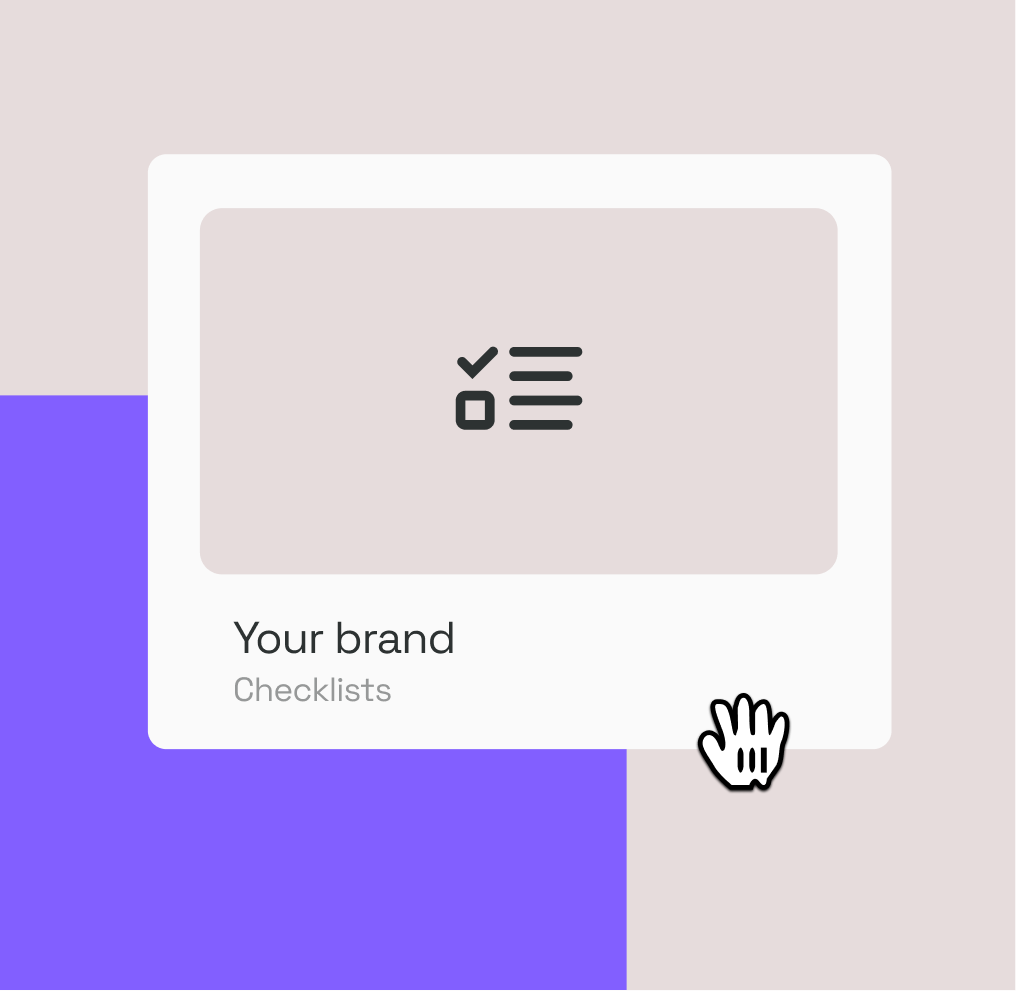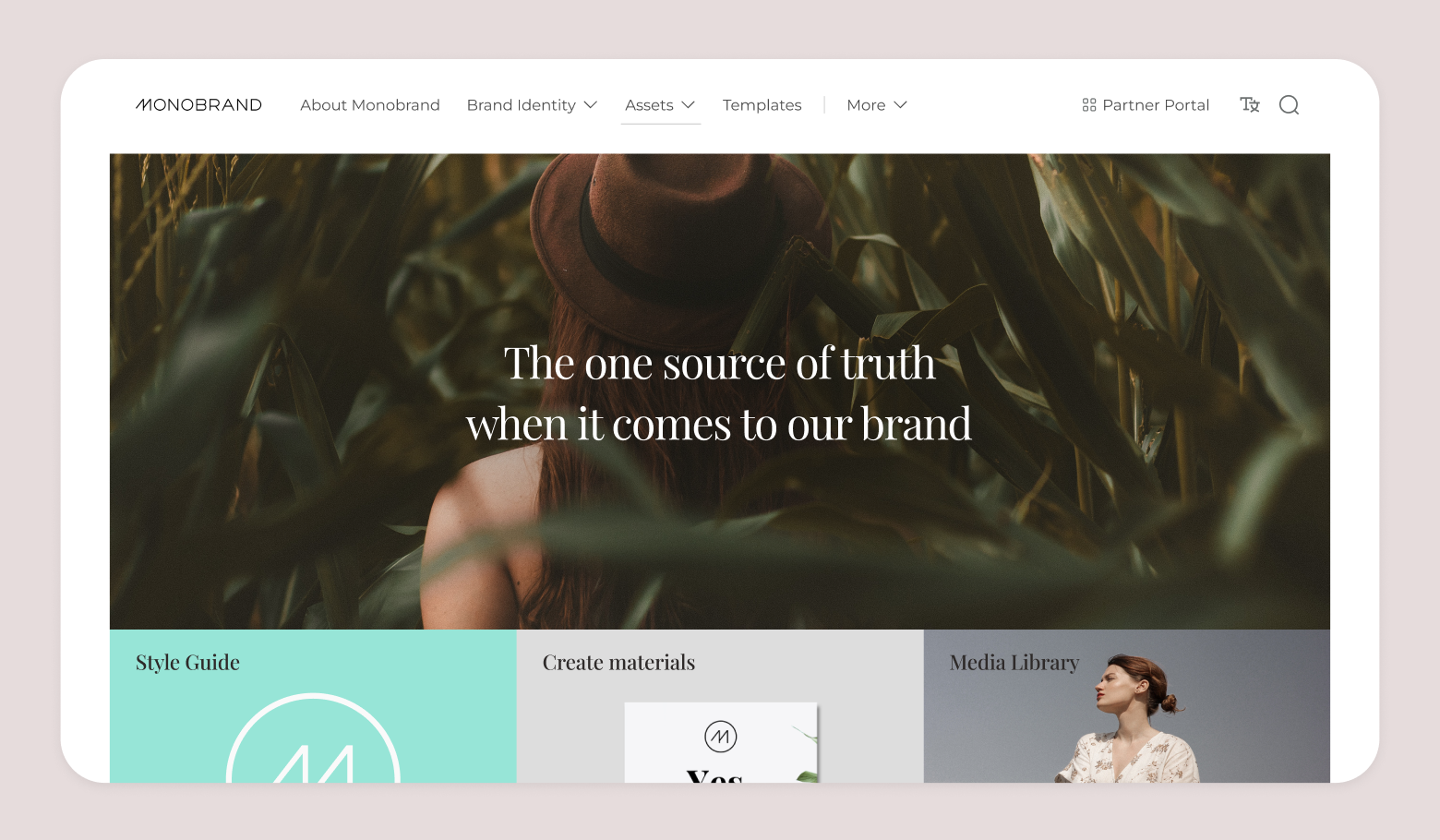
Your brand identity checklist - 4 key stages to follow
Whether you’re working on an existing brand or developing a new one from scratch, getting your brand identity right is crucial. Use this checklist to ensure your brand is consistently represented across all platforms and touchpoints — and it resonates with your target audience.
Stage 1: Lay the foundation
The first stage focuses on the intangible brand elements — its vision and values. Clarifying these gives you a foundation to build your brand identity once we start looking at the visual aspects and voice.
1.1 Articulate the brand vision
Your brand’s vision is the future you aim for.
Work with your founder or CEO to identify the big-picture “end goal” for your brand. Think of this as the guiding light — all your company’s most important decisions will aim to move you closer to achieving that vision.
1.2 Define the brand mission statement
Your mission statement is the heart of your brand. It takes your vision and turns it into something more concrete that communicates your purpose and big-picture objectives in an action-oriented and inspiring way.
Start by writing down what your company does and aims to do in the future. Your founder or CEO will likely have their own ideas to contribute here. Then, consider your core values. How do those values feed into your goals? Bring all these inputs together into a short statement defining your business’s purpose for your employees and customers.

1.3 Establish core brand values
Your brand values are a core set of principles your organization believes in and will do all it can to uphold. They guide the company’s actions and decision-making.
First, identify your CEO’s personal values, as these will likely inform the company values. Then, you can seek other inputs, like polling employees on the values they feel most aligned with your brand. Learn more about how to create your brand values.
1.4 Understand your audience
The next step is to clarify your brand’s target audience and what they want or need from your organization. Answering these questions helps create a brand identity that resonates without alienating your audience.
Your brand will have two core audiences: an internal and external one. Your internal audience is employees and other company stakeholders, while your external audience is your customers and target market.
Stage 2: Document your brand’s visual identity
If you’re developing a new brand identity, this stage will involve creating these elements from scratch. But if you’re working on an established brand, your focus should be bringing all these aspects together.

2.1 Document your logo guidelines
The logo is your brand’s emblem and most recognizable brand element. Include different variations for multiple use cases:
- Primary logo: the foundation for all other logo versions, the version you’ll use most often
- Secondary logo: a simplified version for smaller spaces or digital use
- Color variations: an inversely colored option and a monochrome option
- Orientation variations: different versions for horizontal and vertical layouts
Each logo variation should look and feel very similar — you’re not creating a new logo; you just need it to work in many different situations.
2.2 Select a color palette
Colors help people recognize your brand and make your company stand out.
Share your company’s color palette, including color codes in different formats (like CMYK, RGB, and HEX). This will help your team choose the right colors when designing for print and digital. You could also add color swatches so it’s easy to see what each color looks like.
2.3 Identify fonts
Brand fonts and typography are another visual representation of your brand. You want everyone to use the correct fonts to create a professional, consistent brand identity.
Identify the fonts that are part of your branding kit. You may use different fonts for various use cases — for example, for headings, body text, and in prominent places on your website. You may also have different fonts for web and print use.
2.4 Gather visual elements
Besides fonts and logos, other visual elements help you create consistency across all touchpoints users have with your brand. These elements could include:
- Icons
- Product imagery
- Stock photos
- Graphic elements
Look for visual assets that your team often uses in creative branding work. Gather these elements together — they’re an important part of your brand identity. Think of them as the supporting cast, while the other elements are the main stars.
Stage 3: Develop the brand’s voice
The next step is to work out how your brand sounds so you have a consistent identity for written content and communications.

3.1 Determine the brand voice
Your brand voice encompasses the tone and personality in written content. It includes the words and language you use to speak with your audience.
Review your existing copy to understand your current voice. How well does it convey your brand’s unique values, personality, and identity? Some assets may do it better than others, so pick out the best ones and use those to start defining the core characteristics of your brand voice. Then, try some different exercises to refine it further.
3.2 Set the tone
Your tone is part of your brand voice. While you’ll probably have a consistent voice for all content, your tone will change depending on the situation. For example, you’ll adopt a slightly different tone when communicating with existing customers than sales prospects. Similarly, it’ll change across platforms — think of Instagram versus LinkedIn.
List all the ways and places you communicate with your audience and then map how your brand tone should change to suit. You could use sliding spectrums, such as formal versus informal, chatty versus serious.
3.3 Craft your core brand messages
Next, you need to define your core brand messaging and ensure it’s relevant to your target audience. Start by documenting your key themes, brand values, and unique perspectives. Then, work out how they relate to your audience. Look for patterns and common threads and use those to identify messaging opportunities. These will help you build a framework to develop the core messages for your brand.
Stage 4: Ensure brand consistency
Once you have a clear idea of your brand identity, you want to ensure it’s presented consistently across all channels and touchpoints.

4.1 Create brand guidelines
Brand guidelines document the rules and instructions for bringing your brand to life. They help companies achieve consistency by demonstrating how to look and sound. Here’s what you should include in your brand guidelines.
Online brand guidelines in a platform like Frontify are the key to consistency. They’re easy to access and update, and, as they’re centralized, you don’t have to worry about people working from old versions by mistake.
4.2 Provide training
Help everyone in your company learn about your brand. Run branding sessions as part of new employee onboarding, and consider organizing brand refresher training every six months or so — more frequently if you’re making significant changes to the brand.
Training helps people get hands-on with the brand. It also breaks down organizational silos and helps employees feel better connected to the brand rather than thinking of it as something owned by the marketing department.
4.3 Guard against brand-damaging content
You can also take steps to help prevent the creation of content that dilutes your brand identity:
- Retire or expire old brand assets — remove them from your system so people can’t continue using them.
- Create a brand governance framework to help employees understand how their role connects to the brand.
- Document who is responsible for providing brand-related support, guidance, approvals, and feedback.
- Create a brand identity checklist with all your core brand elements.
These measures all provide guardrails to help people use your brand assets correctly. They protect against accidental misuse of materials and can help improve brand awareness inside your organization.
4.4 Embrace digital asset management
Digital asset management (DAM) is the process of storing and managing your company’s digital assets — from product photos and marketing collateral to logo files and color palettes. A dedicated DAM system simplifies managing digital assets: It helps companies organize, collaborate on, and share their files within a centralized location.
A DAM system is especially helpful for centralizing a large volume of digital assets, managing a global or distributed organization, and strengthening brand governance within the organization.
Brand identities evolve — make sure you can stay up to date and embrace the journey

A brand’s identity isn’t set in stone. It will progress and shift as the company grows, changes, and develops. You can also use this checklist to revisit your brand periodically and review if all the elements still align with the brand and its values.
A comprehensive brand management system like Frontify helps you centralize everything related to your brand in one shared space, so you only need to update things in one location as your brand evolves.